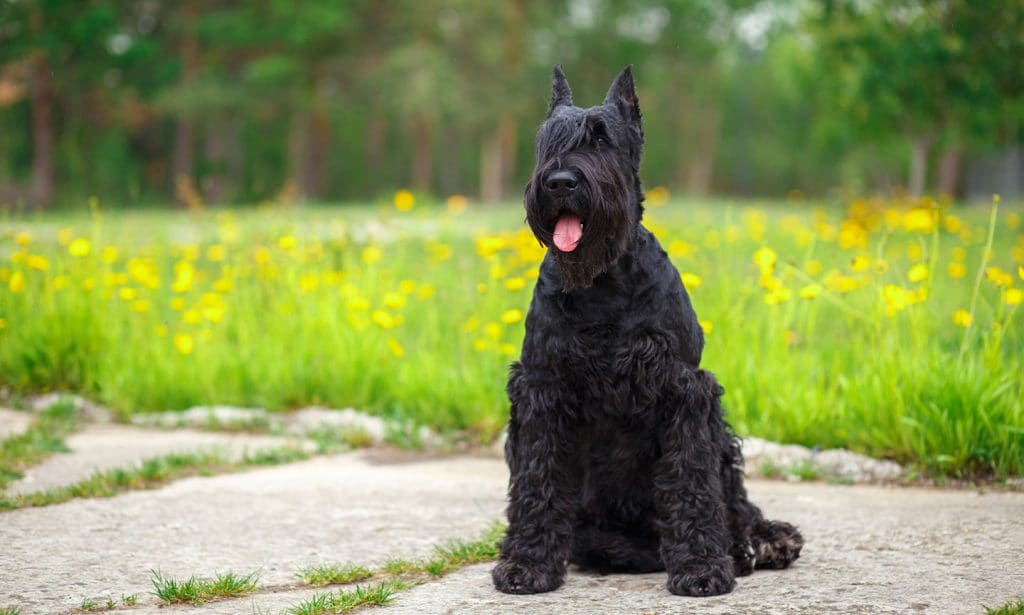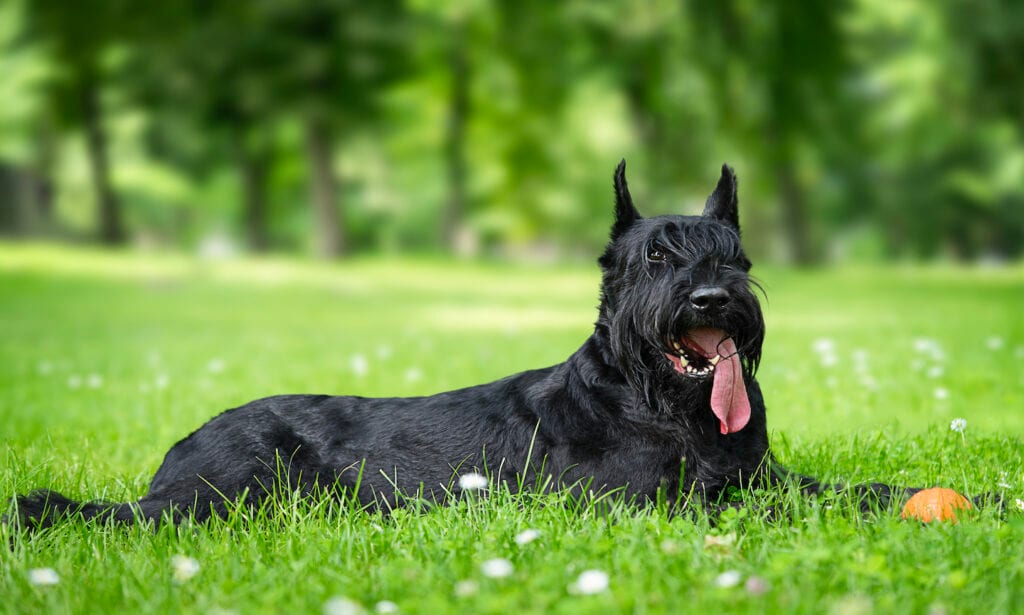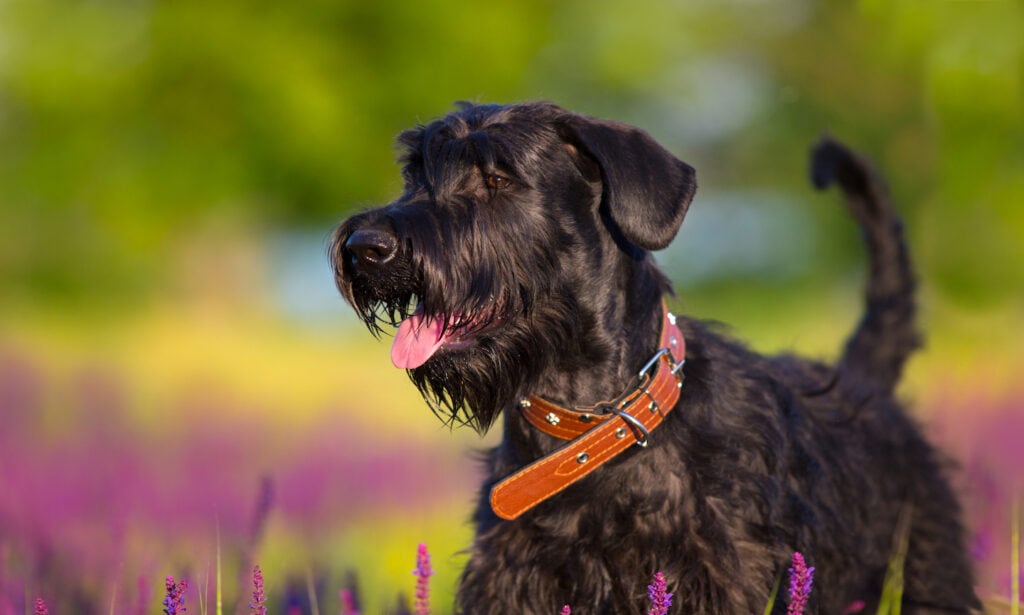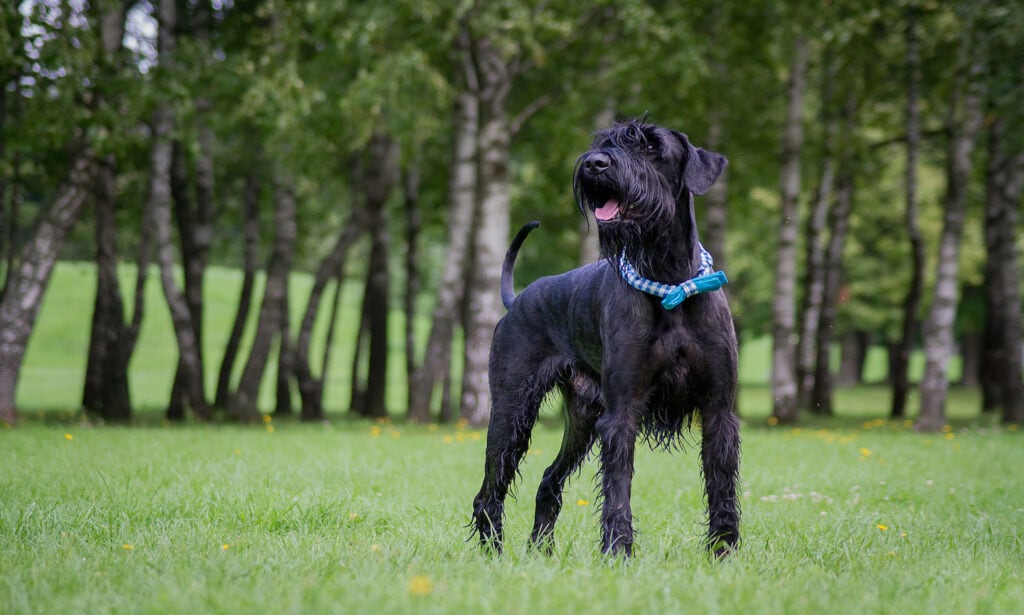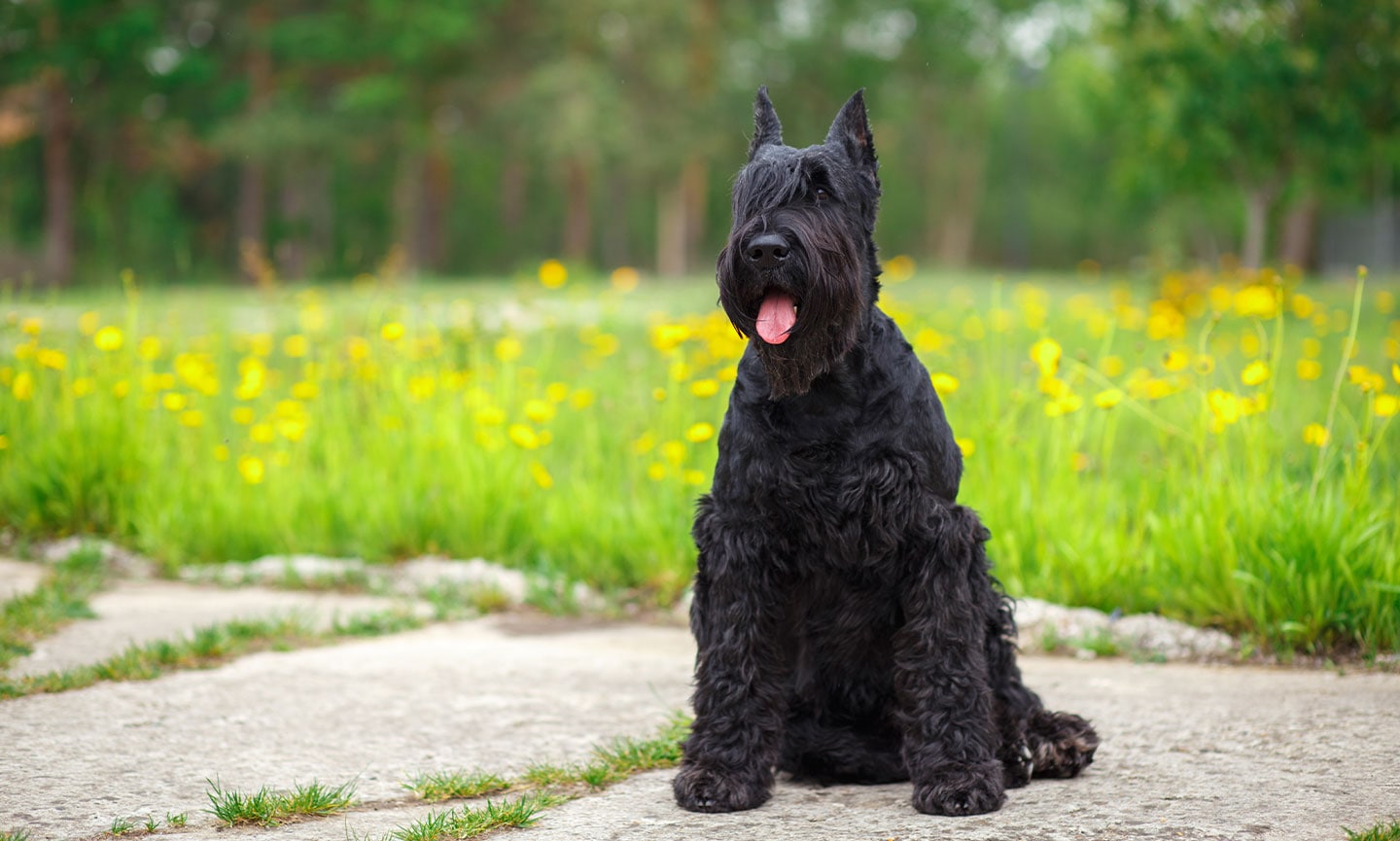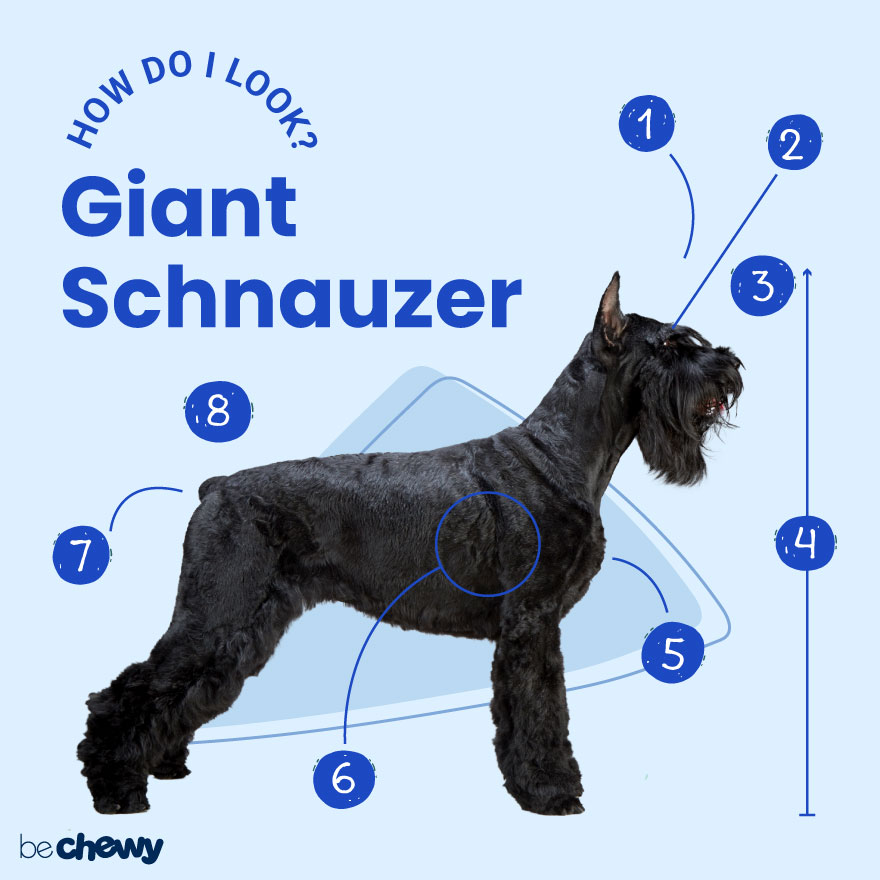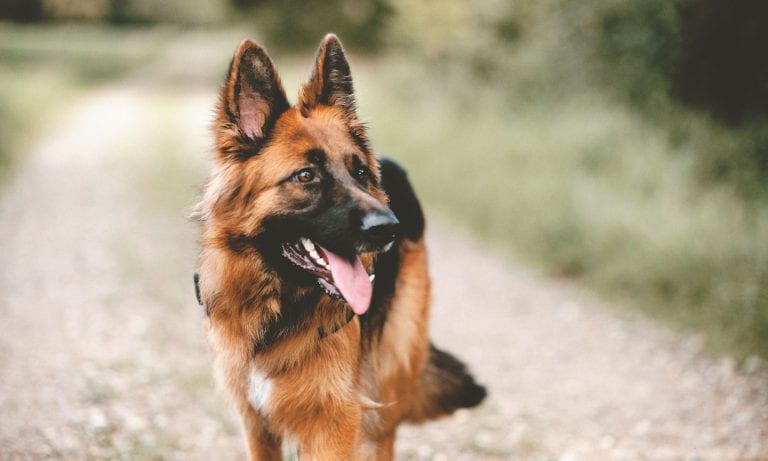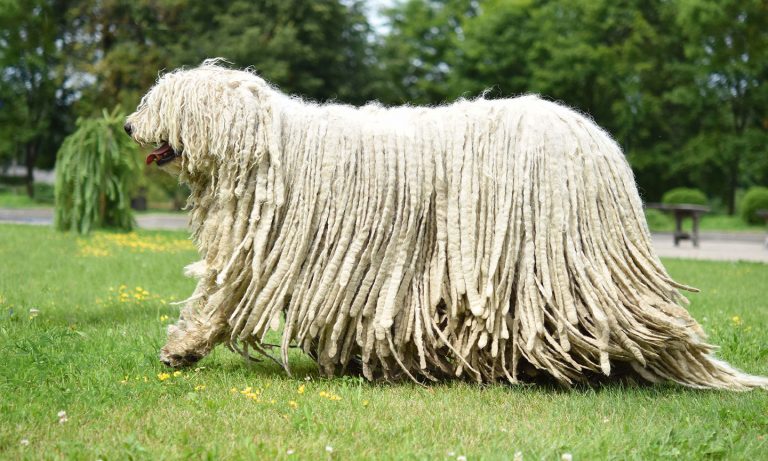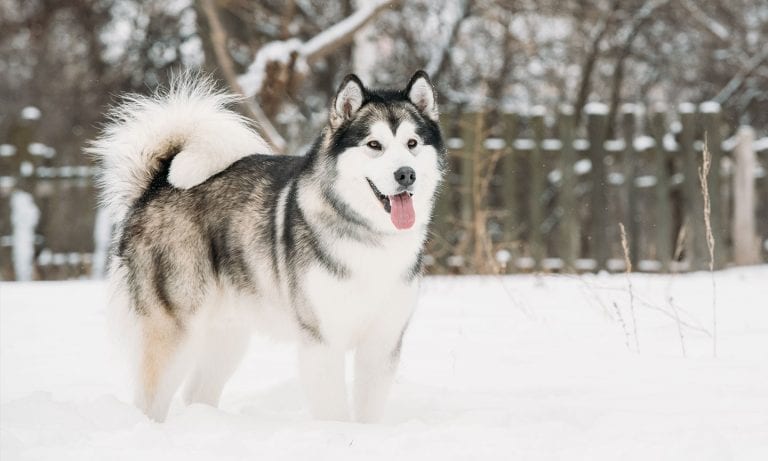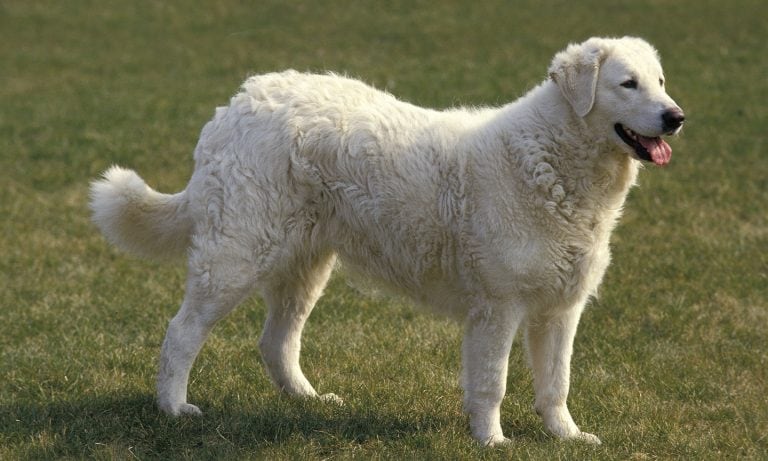Big, beautiful Giant Schnauzers are scroll-stoppers of Instagram with their hallmark eyebrows and beards. Their smarts and cleverness make them fun to be around—especially when teaching them new tricks. Loyal and with stamina to spare, they are ideal companions for the “work hard, play hard” pet parent who leads an active life. Looks, intelligence and a competitive nature? Your pup will rarely leave your side, which is your reward for the love and devotion you give.
Breed Snapshot
Temperament:
WatchfulLoyalCoat Color:
BlackSalt And Pepper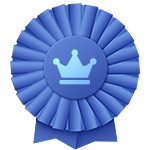
Best For
Giant Schnauzers are large and high-energy dogs that do best with an experienced and active pet parent. As the largest of the three Schnauzer breeds, they do best with lots of space—and a tall fence they can’t easily hop over.
Giant Schnauzer Temperament
Giant Schnauzers are amiable yet commanding, and were originally bred to work as guard dogs. The Giant Schnauzer size—and big bark to match!—might make them intimidating to strangers. But with family? They are wonderfully engaged, friendly dogs who want nothing more than to be with their pet parent.
They’re highly intelligent—Giant Schnauzer puppies can be downright mischievous!—and if socialization and exercise needs aren’t met, they’ll make it their job to create a job for themselves that may be difficult to undo. Digging holes and destroying furniture or slippers are not unheard of! For this reason, make sure you give them a job to do that you actually approve of, like fetching your slippers or the morning paper.
Giant Schnauzer dogs can be good with older kids once they’re properly trained and socialized, but these big dogs don’t make the best of companions for small children that can easily (though accidentally!) be knocked over. Giant Schnauzers can also be trained to live happily with other furry family members, but make sure they’re of the barking variety—best to steer clear of the meowing kind.
How to Care for a Giant Schnauzer
Giant Schnauzers need a higher level of exercise than most dogs. The same goes for mental stimulation, as well as the cost of extensive regular grooming (trimming, baths, teeth cleaning and nail trimming). The most distinctive Giant Schnauzer traits are their beard and brows—which give them a look of nobility—but they’ll both need to be cleaned after every meal to catch drool and debris that naturally accumulate. But they’ll repay your attentions with lots of love!
Giant Schnauzer Health
The Giant Schnauzer has a lifespan of 12 to 15 years. Health problems are common in pure breeds, so it’s highly important to find a reputable breeder. The most common Giant Schnauzer health issues include:
- Hypothyroidism: Giant Schnauzers are prone to hypothyroidism, a condition in which the body doesn’t produce enough thyroid hormones. Signs can include dry skin and coat, hair loss, weight gain or behavioral changes. Treatment is typically daily oral medication.
- Hip and Elbow Dysplasia: A Giant Schnauzer’s size makes them prone to hip dysplasia and elbow dysplasia, both of which often result in arthritis. Early detection enables treatment to minimize pain, and in more serious cases surgery may be an option. Giant Schnauzer weight issues will only worsen dysplasia, so be sure to keep your pup lean.
- Osteochondritis Dissecans (OCD): This developmental condition occurs when cartilage does not turn to bone as it should during the growth process. This can result in pain and limping in young Giant Schnauzer puppies, often those 3 to 9 months of age. Surgery may be needed.
- Bloat or Gastric Dilatation-Volvulus (GDV): The Giant Schnauzer’s size and the deep shape of their chest place them at higher risk for gastric dilatation and volvulus, also known as GDV or bloat. When a dog bloats, the stomach twists on itself and fills with gas. Left untreated, the condition is quickly fatal. If your dog retches or dry-heaves, acts restless, has an enlarged abdomen or lies in a prayer position (front feet down, rear end up) take your pet to an emergency hospital immediately! You can help protect your pup from GDV by feeding smaller, more frequent meals throughout the day using a slow feeding bowl.
- Von Willebrand Disease: Von Willebrand disease is a blood clotting disorder frequently found in Giant Schnauzers. Ensure that your veterinarian performs diagnostic testing to rule out von Willebrand disease and other similar disorders prior to any surgical procedures for your beloved companion.
Giant Schnauzer History
The Giant Schnauzer dog is the largest of the three Schnauzer breeds (Miniature and Standard being the other two). The Giant Schnauzer breed’s origin dates back to 17th century Germany to the “bear Schnauzer” of Munich, a long shaggy-haired dog related to the Old German shaggy shepherd dog primarily tasked with cattle herding.
The Giant Schnauzer breed is a cross between the “bear Schnauzer” and black Great Dane, which accounts for their shorter hair and larger body, creating an elite working dog who can also serve as a family guard dog.
Similar to the Belgian Bouvier des Flandres, Giant Schnauzers were originally bred to drive cattle from farm to market. The breed gained popularity after World War I and, since then, Giant Schnauzers have been trained to serve as police dogs, military dogs and search and rescue dogs.
The Giant Schnauzer gained American Kennel Club breed recognition in 1930, and the breed is a frequent competitor in the dog sports/competitions circuit. In modern times, the Giant is still bred throughout Europe as a companion and useful working dog rather than as a “fancy” breed.
Are you considering a Giant Schnauzer as a pet? The cost for a Giant Schnauzer puppy ranges from $1,000 to $1,500 for a purebred. For that price, you’re likely to get a pup who’s been screened for health and temperament issues and may come with pedigree papers. To find reputable breeders, visit the American Kennel Club’s website. To adopt a Giant Schnauzer, consider one of these Giant Schnauzer rescues or search Chewy’s database of adoptable dogs in your area.
FAQs
Do Giant Schnauzers shed?
Giant Schnauzer shedding isn’t a big problem, but they do require consistent and careful maintenance. They’re known for their beard (a look of nobility) which needs to be cleaned often due to drool and debris from meals. The Giant Schnauzer’s double coat and hallmark beards and brows require consistent and careful maintenance with regular haircuts and baths.
How big do Giant Schnauzers get?
Giant Schnauzers are known for their large size and can grow to be up to 27 inches tall at the shoulder and nearly 90 pounds.
Are Giant Schnauzers good dogs?
Yes, Giant Schnauzers are good dogs for the right pet parents. Giant Schnauzers are known for their high energy, playful nature, loyalty, friendliness and strength. They make good dogs for active families who enjoy intense activities with a companion at their side.
What are the most common Giant Schnauzer mixes?
- Giant Schnauzer-Poodle mix (Giant Schnoodle)
- Giant Schnauzer-Doberman mix (Giant Dobie Schnauzer)
- Giant Schnauzer-German Shepherd mix (Schnauzer Sheperd)
- Giant Schnauzer-Great Dane mix (Giant Schnauzer-Great Dane)
- Giant Schnauzer-Labrador mix (Giant Schnauzer Lab)

Top Takeaways
Your Giant Schnauzer requires lots of exercise, attention, patience and devotion, but you’ll be rewarded with exceptional loyalty and companionship in return. Ideal for the experienced pet parent, Giant Schnauzers not only seek a job to do but their care can also be considered a job in itself. Early training and socialization—and commitment to their higher-than-typical exercise and grooming needs—mean a level of dedication best left to experienced dog parents who thrive in high-energy activities.
Expert input provided by veterinarian Katia Correa-Chaves, DVM, founder of Animals First Vet Care in Medford, Mass.; certified dog trainer Ali Smith, owner of www.rebarkable.com; certified dog trainer and behavior consultant Ivan M. Petersen, founder of Dog Wizardry; and veterinarian Dr. Corey Shagensky, DVM, founder and owner of Progressive Animal Wellness in Avon, Conn.
Breed characteristic ratings provided by Dr. Sarah J. Wooten, DVM, CVJ, a veterinarian at Sheep Draw Veterinary Hospital in Greeley, Colorado; dog trainer and behavior consultant Irith Bloom, CPDT-KSA, CBCC-KA, CDBC, owner of The Sophisticated Dog, LLC, in Los Angeles; and certified animal behavior consultant Amy Shojai, CABC, in Sherman, Texas.
The health content was medically reviewed by Chewy vets.

Search for Adoptable Giant Schnauzers Near You
Female Names
- Luna
- Stella
- Nova
- Ruby
- Bella
- Onyx
- Willow
- Lola
- Piper
- Nala
Male Names
- Zeus
- Loki
- Winston
- Max
- Otto
- Duke
- Atlas
- Apollo
- Bruce
- Charlie
Share:
